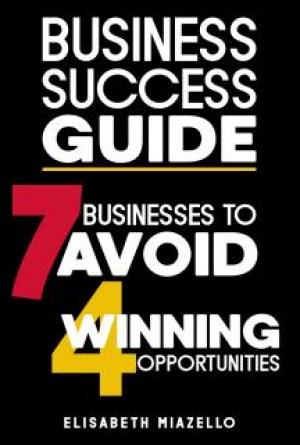FOOTNOTES
1 CAUTION: Do not approach a customer as a mentor or an instructor unless specifically asked to do training. It could easily be interpreted as condescending. Also, don’t approach as a guru, inducing in the customer a sense of inferiority. Tact and humility are vital. The customer is always the alpha dog. See chapter 6.
2 The words “technical” and “technology” have been much overworked in recent years. Our use of those words will refer to any specialized body of knowledge which may be the subject of a bidding situation, where expertise in that body of knowledge will be a factor in who wins the bidding contest. Although many technologies in this sense are the subjects of scientific or engineering study, many are not. For example, in a bidding situation for the right to cater food to some organization, quality, variety, nutrition, and presentation of the food could all be factors which influence the award.
3 In this book we use the expression “integrated project teams” in preference to the expression “integrated product teams” which is often heard. The reason is that we expect the team to address the entire project (product + programmatics) in an integrated fashion, and not just the product.
4 The role of the BDT is to identify for the customer a need which should be pursued. The pursuit team is the team formed to respond to a specific customer request for proposal. The project team is the team formed to work an awarded project. Some high value persons may be members of all three teams.
5 If this book were about developing products for the public at large I would recommend the Quality Function Deployment (QFD) approach to learning about customer wants and how to translate them into successful products. An excellent source of information on that approach is (Ficalora & Cohen, 2010). But that is not what this book is about, and the approach I describe here therefore differs from the popular QFD approach.
6 If you are able to pre-sell a goals package to a customer, keep in mind that other customers might like to hear about it, too.
7 A situation that sometimes arises is the cash-rich competitor who wants the project so badly that he bids on a loss basis. He may do this to capture a leading place in a new technology, or perhaps simply to cause short-or long-term damage to one or more competitors. If the customer will go along with this, it can be very difficult to defend against unless you are willing to do the same thing.
8 See Appendix E for a discussion of the shortcomings of typical work breakdown structures, and what might be done about them.
9 Function points are a unique and clever way of measuring the functionality of software. Interested readers should contact the International Function Point Users Group (IFPUG).
10 The model is described in more detail in Chapter 13. It is available free from the author in the form of an Excel® spreadsheet.
11 Having less than astute competitors generally will work in your favor. However, a less that astute customer is a loose cannon and a danger to all serious bidders. See chapter 7.
12 In between there are several contracting options that involve sharing in cost overruns.
13 For the statistically sophisticated: Other evidence could lead you to assign a normal, lognormal, or other distribution.
14 Using the WBS as a framework for a project risk analysis is a very common practice. However, it does have a serious fault. The typical WBS covers only so-called direct charge work. It may not include overhead functions or costs such as executive management, depreciation charges, departments such as contracts, human resources, purchasing, plant security, and others that are classified arbitrarily as overhead functions. Since these functions are not included in the WBS, their costs must be captured by some other means, the typical means being an unexplained “burden” costs against direct labor. The problem with this arrangement from a risk analysis point of view is that risk that arises from overhead activities tends to be ignored in project risk analysis, yet these activities are a common source of major project problems. A practical remedy, for the purposes of risk analysis, is to include overhead activities in the analysis as well as direct charge activities. See also Appendix D.
15 See the section on Ishikawa diagrams in Appendix C for further discussion of root causes.
16 Readers who would like to use the Bid to Win Simplified Risk Analysis tool shown in Exhibit 14-2 will find it included in the CD you will receive if you acquire the Best Bid model. The tool will have capability for handling up to 25 risk drivers and 100 WBS elements. Please see the last page of this book for instructions.
17 Note that the average value from the toss of a single die is 3.5. But that value has a probability of zero of occurring.
18 Please forgive our lapse into not-so-gender-neutral writing. When the T-shaped man concept originated, apparently in the early 1960s, almost all managers were men. Incidentally, the (male) author of this book can’t help but wonder how many women would object to being called T-shaped even in a complimentary sense.
19 Despite appearances, this is not another lapse into not-so-gender-neutral writing. As of this writing, U.S, Navy submarine crews are strictly male. Most other classes of U.S. naval vessels now have women in their crews. However, in a recent announcement, the U.S. Navy is studying the possibility of billeting women (officers only for now) on U.S. submarines. Your authors is a former submarine sailor. In his opinion this will be interesting, to say the least.
20 But note that if one project does this, the additional costs don’t just vanish. They are dumped onto all other current projects.
21 Try this exercise: Estimate the height above sea level of the tallest mountain in Australia. Write down the steps you used to get your estimate (that is, create a basis of estimate). Search your mind for memories about Australia and about mountains. Don’t just guess. Then look in an atlas and get the correct answer. Many who have never been to Australia and have never climbed a mountain have come up with an answer within 20% of the actual height. Professional estimators tend to do well in this exercise because they are accustomed to searching for analogies.
22 The definition of a root cause is the subject of some debate. According to Wikipedia, “a root cause is an initiating cause of a causal chain which leads to an outcome or effect of interest.” To find a root cause for any outcome or effect, it is only necessary to do what four year olds often do – keep asking “why?” Unfortunately, as every parent knows, that process eventually leads to a blank wall. The only answer that can be given is “that’s just the way it is,” or perhaps “That’s the way God wants it.” Pursuing the “why” question that far back is generally not helpful. There needs to be a stopping place. The place to stop usually is the point in the causal chain where an intervention could best be implemented to change performance and prevent an undesirable outcome. Clearly, this stopping place is a judgment call. Note that there often are multiple root causes. That is, at some point in tracing the chain of causation, branches will be found. The diagram on this page has examples.
23 The American Society of Mechanical Engineers (ASME) and other organizations publish research into machining costs and the cost effects of tighter tolerances.







